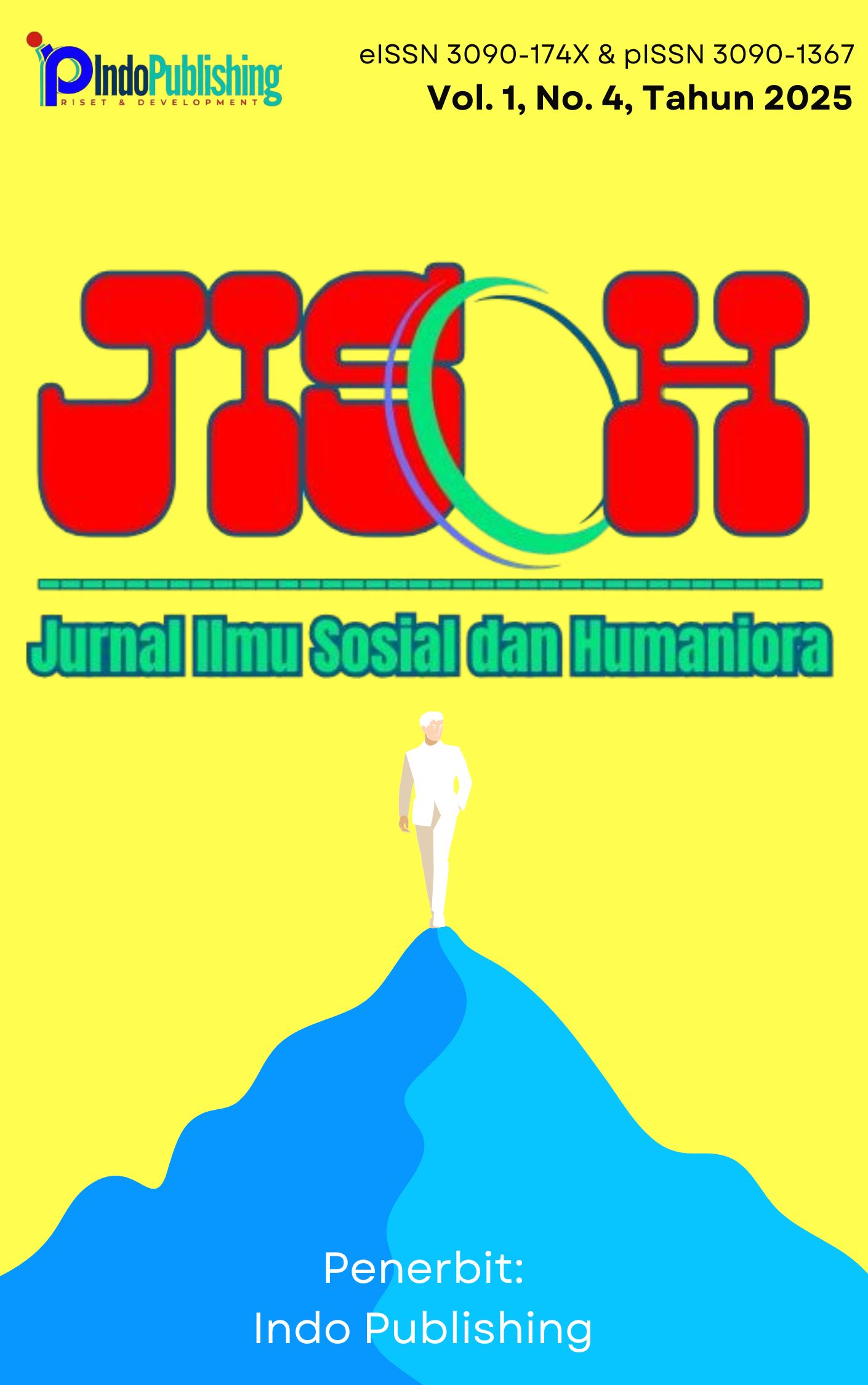Segmentasi Pemilih Moderat dan Tradisional: Peta Elektoral PKS Provinsi Maluku 2024
DOI:
https://doi.org/10.63822/c5na2081Keywords:
voter segmentation; STP; PKS; Maluku; moderate voters; traditional voters; value politics; network politics; 2024 regional elections; 2024 General Elections Commission (KPU)Abstract
The General Elections Commission (KPU) recapitulation (March 19, 2024) placed PAN as the winner of the most votes in the Indonesian House of Representatives (DPR RI) from the Maluku electoral district (178,770), followed by PKS (146,716) and PDI-P (145,777). This study asks: which voter segment—moderate or traditional—supported PKS's achievements, and what are the implications for the 2024 regional elections. Based on the segmentation–targeting–positioning (STP) framework and the Indonesian voter behavior literature, we formalize two constructs: the moderate segment (response to issues–performance–accountability) and the traditional segment (social–religious networks, local figures, culturally valuable services). The explanatory sequential mixed method design (quantitative → qualitative) anchors the analysis on official KPU data, accompanied by a proposed Moderate Index (IM) and Traditional Index (IT) for mapping per sub-district/urban village. The results show that PKS's best performance occurs when value politics meets network politics: in the high IM corridor, differentiation is determined by concrete policy language and public accountability; in the high IT corridor, the rhythm of da'wah (preaching) and social gatherings, rooted figures (including women), and cultural service packages secure votes. The decline in provincial DPRD seats indicates inefficient vote conversion due to thin distribution and the lack of anchor figures in several traditional pockets. Practical implications: STP orchestration based on the IM-IT map, focusing on "last seat" polling stations, and meso channels to bridge issues and services ahead of the 2024 regional elections.
Downloads
References
Anselin, L. (1988). Spatial econometrics: Methods and models. Kluwer Academic Publishers. https://doi.org/10.1007/978-94-015-7799-1
Anselin, L. (1995). Local indicators of spatial association—LISA. Geographical Analysis, 27(2), 93–115. https://doi.org/10.1111/j.1538-4632.1995.tb00338.x
Aspinall, E., & Sukmajati, M. (Eds.). (2016). Electoral Dynamics in Indonesia: Money Politics, Patronage and Clientelism. Singapore: NUS Press. DOI: n/a. Google Scholar
Aspinall, E., & Sukmajati, M. (Eds.). (2017). Electoral Dynamics in Indonesia: Money Politics, Patronage and Clientelism at the Grassroots. Singapore: NUS Press. ISBN 978-981-4722-38-1.
Aspinall, E., & Sukmajati, M. (Eds.). (2017). Electoral dynamics in Indonesia: Money politics, patronage and clientelism at the grassroots. NUS Press.
Braun, V., & Clarke, V. (2019). Reflecting on reflexive thematic analysis. Qualitative Research in Sport, Exercise and Health, 11(4), 589–597. DOI: https://doi.org/10.1080/2159676X.2019.1628806 Google Scholar:
Bivand, R. S., Pebesma, E., & Gómez-Rubio, V. (2013). Applied spatial data analysis with R (2nd ed.). Springer. https://doi.org/10.1007/978-1-4614-7618-4
Creswell, J. W., & Plano Clark, V. L. (2018). Designing and conducting mixed methods research (3rd ed.). SAGE.
DetikNews. (2024, 19 Maret). KPU tetapkan hasil rekap nasional Pemilu 2024. Jakarta: Detik.com. DOI/URL akademik: n/a. Google Scholar
Fossati, D., Muhtadi, B., & Warburton, E. (2020). Ideological representation in clientelistic democracies: The Indonesian case. Electoral Studies, 63, 102111. DOI: https://doi.org/10.1016/j.electstud.2019.102111 Google Scholar
Gelman, A., Hill, J., & Vehtari, A. (2020). Regression and Other Stories. Cambridge: Cambridge University Press. DOI: https://doi.org/10.1017/9781139161879 Google Scholar
Jolliffe, I. T., & Cadima, J. (2016). Principal component analysis: A review and recent developments. Philosophical Transactions of the Royal Society A, 374(2065), 20150202. https://doi.org/10.1098/rsta.2015.0202
King, G. (1997). A Solution to the Ecological Inference Problem: Reconstructing Individual Behavior from Aggregate Data. Princeton, NJ: Princeton University Press. DOI: n/a. Google Scholar
Komisi Pemilihan Umum Republik Indonesia (KPU RI). (2024, 19 Maret). Rapat Pleno Terbuka Rekapitulasi Hasil Penghitungan Perolehan Suara Tingkat Nasional Pemilu 2024 (DPR RI – Dapil Maluku). Jakarta: KPU RI. DOI/URL akademik: n/a. Google Scholar
Krippendorff, K. (2018). Content Analysis: An Introduction to Its Methodology (4th ed.). Thousand Oaks, CA: SAGE. DOI: https://doi.org/10.4135/9781071878781 Google Scholar
LeSage, J., & Pace, R. K. (2009). Introduction to spatial econometrics. CRC Press. https://doi.org/10.1201/9781420064254
Liddle, R. W., & Mujani, S. (2007). Leadership, party, and religion: Explaining voting behavior in Indonesia. Comparative Political Studies, 40(7), 832–857. DOI: https://doi.org/10.1177/0010414006292113 Google Scholar
Moran, P. A. P. (1950). Notes on continuous stochastic phenomena. Biometrika, 37(1–2), 17–23. https://doi.org/10.1093/biomet/37.1-2.17
Smith, G., & Hirst, A. (2001). Strategic political segmentation: A new approach for a new era. European Journal of Marketing, 35(9/10), 1058–1073. DOI: https://doi.org/10.1108/EUM0000000005958 Google Scholar
Utami, T. D., Prasetyantoko, A., & Putra, D. (2024). Party support thresholds and the rise of Islamic parties in Indonesia: Middle class dynamics and religious preferences. Working paper / in press. DOI: n/a (draft/working paper). Google Scholar
Vehtari, A., Gelman, A., & Gabry, J. (2017). Practical Bayesian model evaluation using leave-one-out cross-validation and WAIC. Statistics and Computing, 27(5), 1413–1432. DOI: https://doi.org/10.1007/s11222-016-9696-4 Google Scholar
Yani, M., Husnaini, H., & Eka, R. (2022). Orientasi politik kiai NU: Pragmatisme kesalehan, figur, dan layanan sosial. [Artikel/prosiding lokal]. DOI: n/a. Google Scholar
Downloads
Published
Issue
Section
License
Copyright (c) 2025 Muhtar, Mukhlis Fataruba, Rukoyah (Author)

This work is licensed under a Creative Commons Attribution-NonCommercial-ShareAlike 4.0 International License.










